Add Native Liatris (Blazing Star) to Butterfly Gardens
Updated: Mar. 20, 2024
Funky purple spires of liatris or blazing star attract butterflies. This native plant blooms into early fall, providing late-season nectar.
On This Page
Liatris Care and Growing Tips
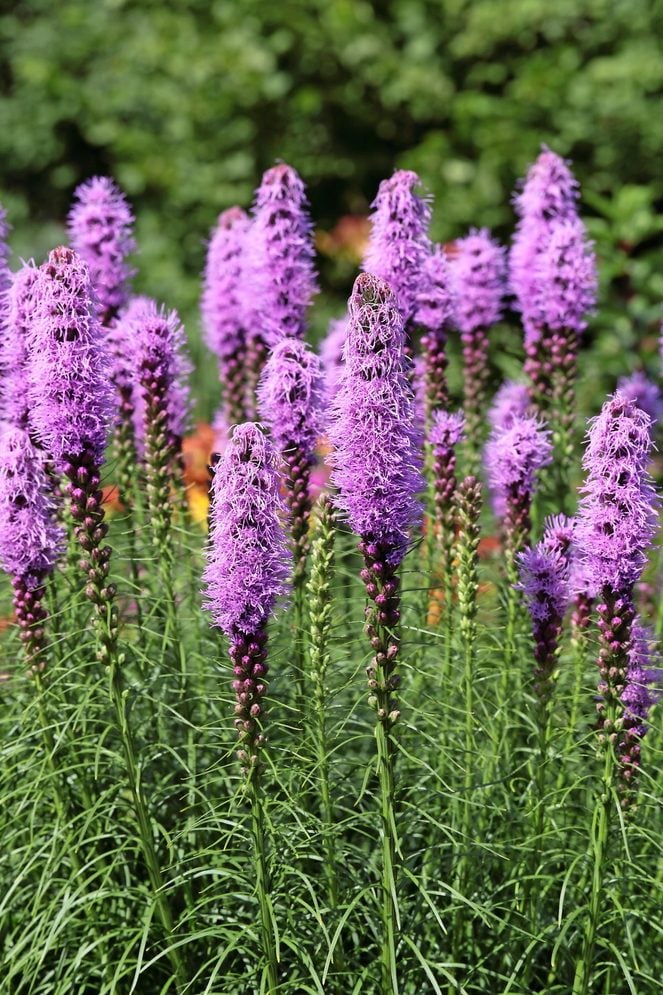
- Common names: blazing star, gayfeather
- Scientific name: Liatris spp.
- Zones 3 to 8
- Attracts: birds, butterflies, bees
- Light needs: Full sun
- Size: 2 to 5 feet tall
- Grown for: Butterfly gardens, borders, cottage gardens and meadows
- Foliage: Lance-shaped leaves
- Cultivars to try: Alba tends to grow a little shorter than other liatris and has white flowers. For a smaller plant with purple blooms, grow Kobold Original.
Blazing star (Liatris spp.) is part of the Aster family (Asteraceae). The plant is a beacon to butterflies and hummingbirds. Purple flowers bloom in late summer or early fall, depending on the species, and last for a month or two. Liatris can be planted in poor soil, but needs plenty of sun. Many species are native to the eastern U.S.
Liatris Species to Grow
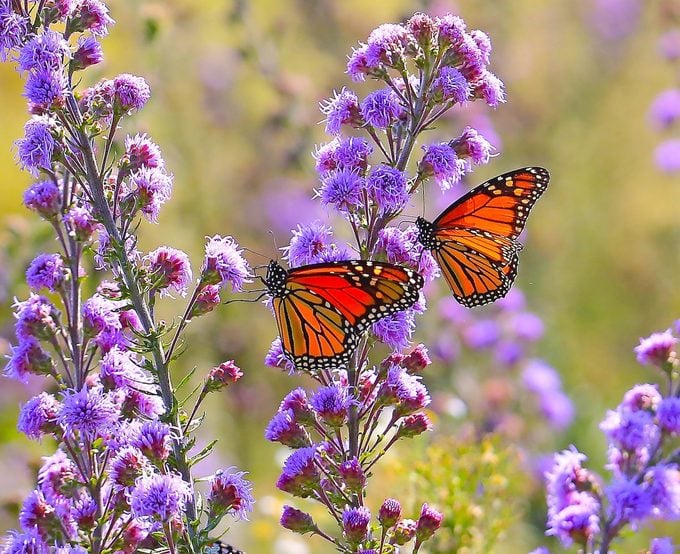
The 50 or species of this genus are all native to North America. The most common species you’ll find in cultivation is Liatris spicata, sometimes known as dense blazing star or gayfeather. There are multiple cultivars available, including some with pink and white flowers. Dwarf varieties like Kobold are good for smaller gardens, measuring around 2 feet tall.
L. spicata is suited to zones 3 to 8, and requires regular water to flower best. It can be difficult to grow in the Deep South due to its intolerance of high heat and humidity. Fortunately, there are other blazing star species available for a wide range of growing conditions. Your best bet is to seek out the species that are native to your area.
Try prairie blazing star (L. pycnostachya) for radiant rosy purple flowers in zones 3 to 9. It will reseed readily. Tall and spindly meadow blazing star (L. ligulistylis) is a monarch butterfly favorite with showy, long-lasting flowers that appear in late summer.
When to Plant Liatris
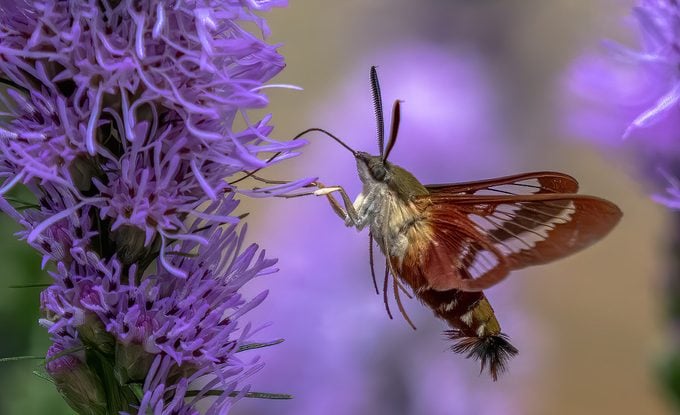
Liatris is somewhat difficult to grow from seed. You can buy potted plants or corms (similar to bulbs) and plant them in the spring for blooms in late summer and fall.
Birds & Blooms reader Barbara Giese of Manitowoc, Wisconsin, asks, “Is September too late in the year to plant liatris corms?”
Gardening expert Melinda Myers says, “It’s best to plant liatris corms in spring or early summer. You could either store them for winter or try planting them this fall with other spring-flowering bulbs. If you decide to plant them in fall, wait for the soil to cool so the corms do not sprout this year.”
Liatris Wildlife Benefits
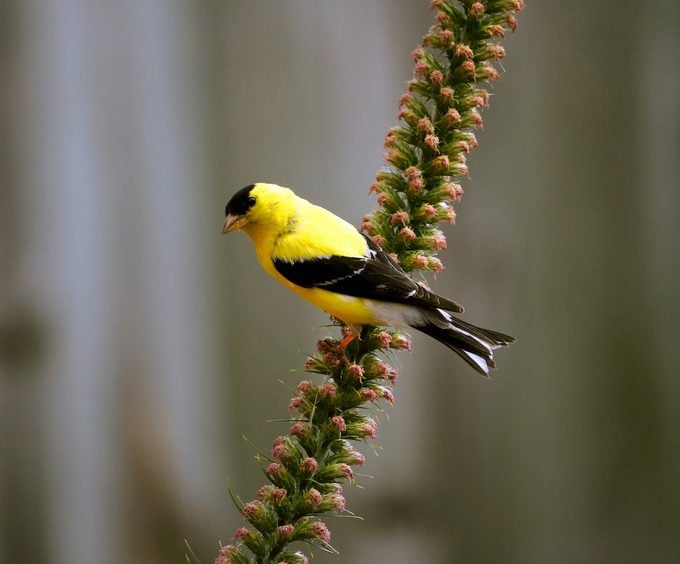
The beautiful purple spikes of blazing star add color and interest to any butterfly garden, with stacks of small fuzzy flowers that are full of nectar. This bloom draws butterflies and other pollinators in droves. It’s a magnet for monarchs and tiger swallowtails, and also attractive to silver-spotted skippers, red admirals, painted ladies and sulphurs. Hummingbirds are known to swing by for a drink of nectar, too.
After the flowers fade and dry, liatris still attracts wildlife and provides winter interest. Songbirds hover around the fluffy seed heads, picking away at the seeds.
Check out the top 10 purple flowers that attract hummingbirds.
Where to Plant Liatris
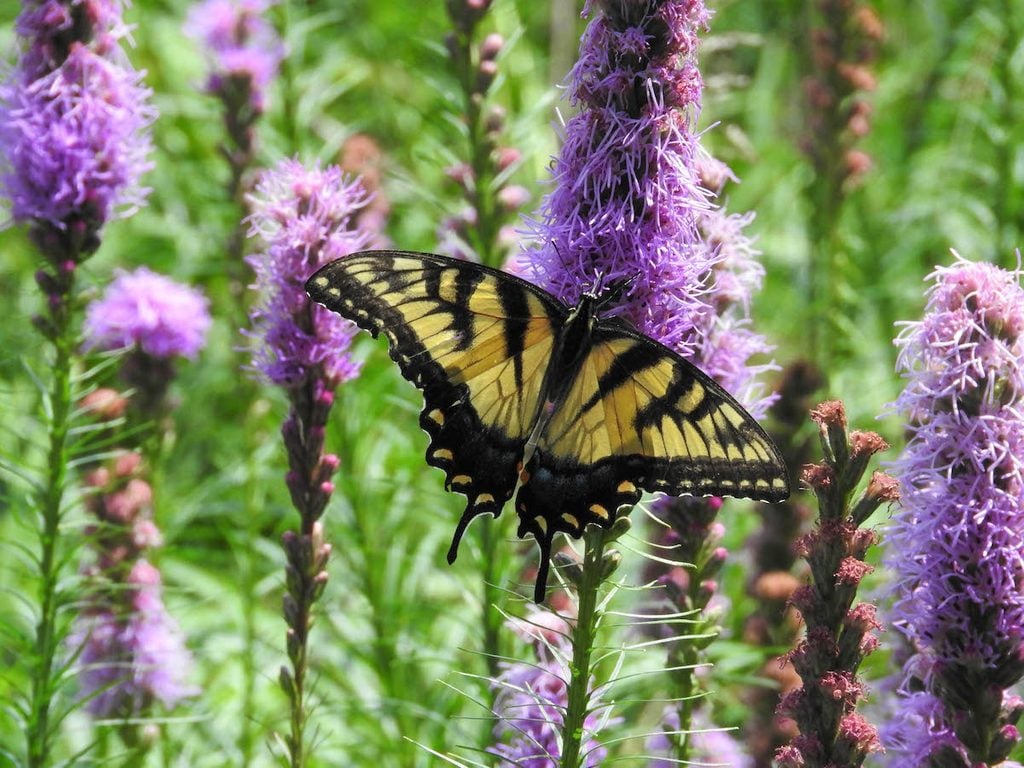
Blazing star is a natural choice for a butterfly garden. Plant tall varieties along the back of beds or in the center for interest. Plan to provide some support in more formal garden settings. The stems have a tendency to fall over, especially after heavy rains. Most gardeners report that liatris is generally deer-resistant. Dwarf varieties make excellent cutting garden flowers.
Next, check out the best host plants for butterflies.
Sources
- Missouri Botanical Garden
- University of Wisconsin-Madison Division of Extension, Liatris
- Monrovia
- North Carolina Cooperative Extension
- The Morton Arboretum
About the Expert
Melinda Myers is the official gardening expert for Birds & Blooms. She is a TV/radio host, author and columnist who has written more than 20 gardening books. Melinda earned a master’s degree in horticulture from the University of Wisconsin-Madison.
Why Trust Us
For nearly 30 years, Birds & Blooms, a Trusted Media Brand, has been inspiring readers to have a lifelong love of birding, gardening and nature. We are the #1 bird and garden magazine in North America and a trusted online resource for over 15 million outdoor enthusiasts annually. Our library of thousands of informative articles and how-tos has been written by trusted journalists and fact-checked by bird and garden experts for accuracy. In addition to our staff of experienced gardeners and bird-watchers, we hire individuals who have years of education and hands-on experience with birding, bird feeding, gardening, butterflies, bugs and more. Learn more about Birds & Blooms, our field editor program, and our submission guidelines.
